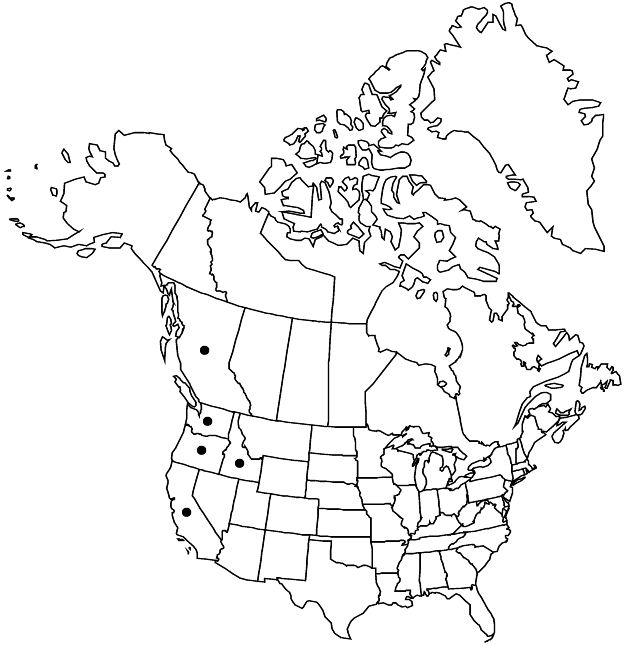Difference between revisions of "Cornus nuttallii"
Ornithol. Biogr. 4: 482. 1838. (as nuttalli)
FNA>Volume Importer |
imported>Volume Importer |
||
| (4 intermediate revisions by 2 users not shown) | |||
| Line 6: | Line 6: | ||
|place=4: 482. 1838 | |place=4: 482. 1838 | ||
|year=1838 | |year=1838 | ||
| + | |other_info_on_pub=(as nuttalli) | ||
}} | }} | ||
|common_names=Pacific or mountain dogwood | |common_names=Pacific or mountain dogwood | ||
| Line 19: | Line 20: | ||
|name=Benthamidia nuttallii | |name=Benthamidia nuttallii | ||
|authority=(Audubon) Moldenke | |authority=(Audubon) Moldenke | ||
| + | |rank=species | ||
}} {{Treatment/ID/Synonym | }} {{Treatment/ID/Synonym | ||
|name=Cynoxylon nuttallii | |name=Cynoxylon nuttallii | ||
|authority=(Audubon) Shafer | |authority=(Audubon) Shafer | ||
| + | |rank=species | ||
}} | }} | ||
|hierarchy=Cornaceae;Cornus;Cornus subg. Cynoxylon;Cornus nuttallii | |hierarchy=Cornaceae;Cornus;Cornus subg. Cynoxylon;Cornus nuttallii | ||
| Line 45: | Line 48: | ||
-->{{#Taxon: | -->{{#Taxon: | ||
name=Cornus nuttallii | name=Cornus nuttallii | ||
| − | |||
|authority=Audubon | |authority=Audubon | ||
|rank=species | |rank=species | ||
| Line 60: | Line 62: | ||
|publication year=1838 | |publication year=1838 | ||
|special status=Weedy;Endemic | |special status=Weedy;Endemic | ||
| − | |source xml=https:// | + | |source xml=https://bitbucket.org/aafc-mbb/fna-data-curation/src/2e0870ddd59836b60bcf96646a41e87ea5a5943a/coarse_grained_fna_xml/V12/V12_1076.xml |
|genus=Cornus | |genus=Cornus | ||
|subgenus=Cornus subg. Cynoxylon | |subgenus=Cornus subg. Cynoxylon | ||
Latest revision as of 19:13, 5 November 2020
Shrubs or trees to 20 m, flowering at 2 m. Stems clustered, bark forming square to rectangular plates 0.5–1 cm wide; branchlets green, maroon, or dark red, appressed-hairy; lenticels pale round or lenticular spots, with dark central pore. Leaves: petiole 5–17 mm; blade elliptic, ovate, or obovate, 6–15 × 3–9.5 cm, base broadly cuneate, apex short acuminate, abaxial surface pale green, appressed-hairy, tufts of erect hairs present in axils of secondary veins, adaxial surface yellow green, appressed-hairy; secondary veins 4–6 per side, most arising from proximal 1/2. Inflorescences convex, 1.5–3 cm diam., 40–75-flowered, subtended by pair of reduced leaves and pair of cataphylls; peduncle 40–60 mm; petaloid bracts 4–6, surrounding but not enclosing inflorescence through winter, white or tinged with pink, rhombic to obovate, 2.5–7 × 1.7–6 cm, apex short acuminate. Flowers: hypanthium appressed-hairy; sepals 1–1.5 mm; petals cream or yellow-green, rarely purple distally, 3–4 mm. Drupes red, closely appressed to each other, angular in cross section, 10–17 × 5–7.5 mm; stone ellipsoid, 7–9 × 4–5 mm, smooth. 2n = 22.
Phenology: Flowering Apr–Jul, sometimes Sep–Oct; fruiting Aug–Oct.
Habitat: Dry to moist coastal coniferous and montane forests.
Elevation: 0–2400(–3000) m.
Distribution

B.C., Calif., Idaho, Oreg., Wash.
Discussion
Selected References
None.